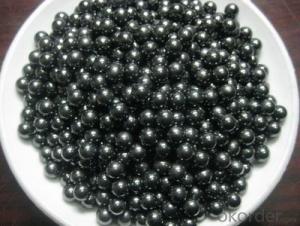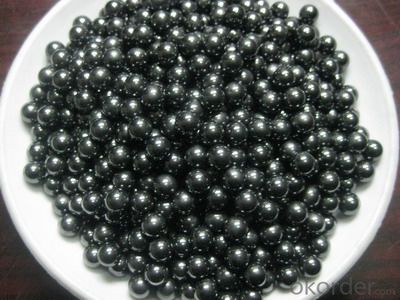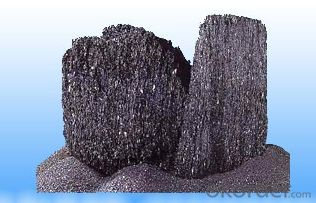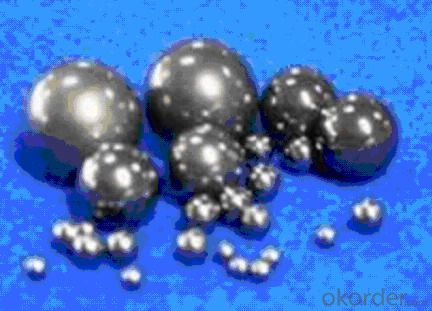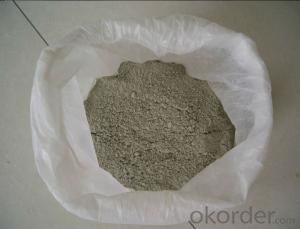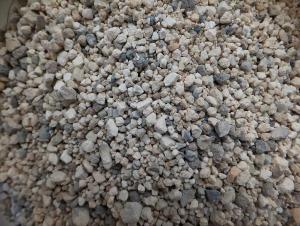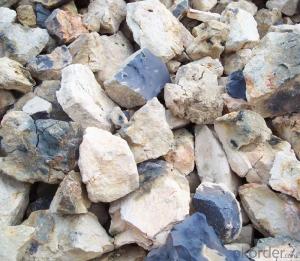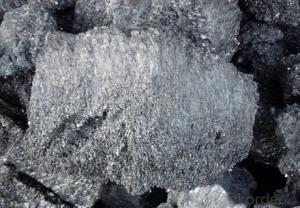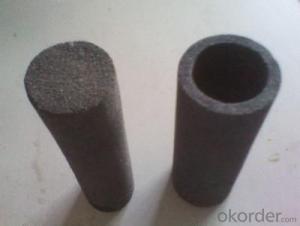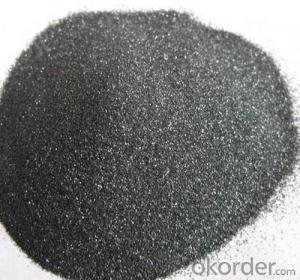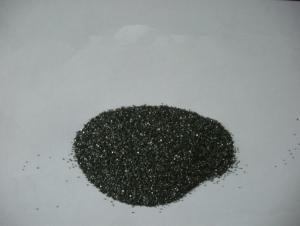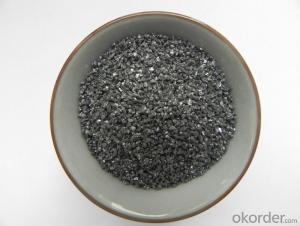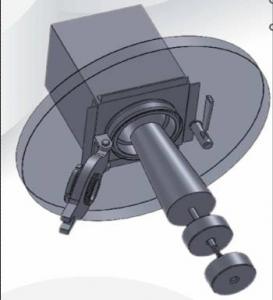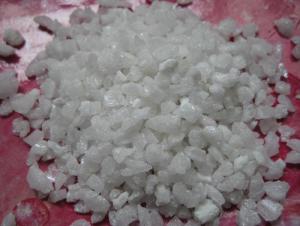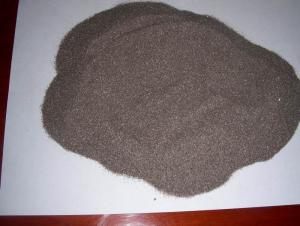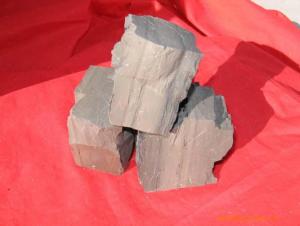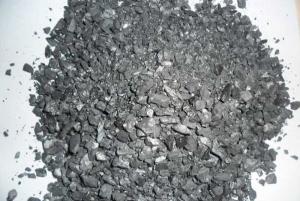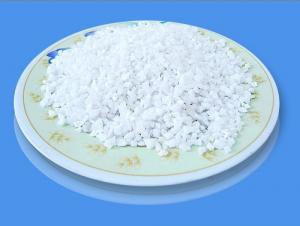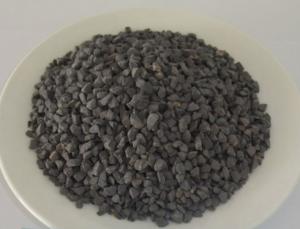Raw Materials for Refractory Silicon Carbide Brick Material
- Loading Port:
- China Main Port
- Payment Terms:
- TT OR LC
- Min Order Qty:
- -
- Supply Capability:
- -
OKorder Service Pledge
OKorder Financial Service
You Might Also Like
Specifications
1Silicon carbide brick2OEM
3ISO9000&CE
4MOQ:1MT
5Timely delivery
Silicon carbide brick
1. Performance of Silicon carbide brick
High strength
Low thermal expansion coefficient
Good thermal conductivity and thermal shock resistance
Good resistance to liquid aluminum erosion capability
High erosion
2. Chemical & Physical Specification of Silicon carbide brick
Index | Al electrolysis cell block | Kiln furniture brick | Pipe | |
SIC, % ≥ | 72 | 70 | 70 | |
Si3N4, % ≥ | 20 | 20 | 20 | |
Fe2O3, % ≤ | 0.7 | 0.7 | 0.7 | |
Bulk Density, g/cm3 ≥ | 2.62 | 2.60 | 2.55 | |
Apparent Porosity, % ≤ | 17 | 18 | 20 | |
Cold Crushing Strength, Mpa ≥ | 150 | 140 | 120 | |
MOR, Mpa | Room temp. ≥ | 42 | 40 | 35 |
1400°Cx0.5hrs ≥ | 45 | 45 | 40 | |
Refractoriness Under Load (0.2Mpa,0.6%), °C ≥ | 1700 | 1700 | ---- | |
Thermal Shock Resistance (Water quenching at 1100), cycle ≥ | 30 | 30 | ---- | |
3. Typically Application of Silicon carbide brick:
1.) Side wall Electrolyzer cell chemical-industrial reaction pot.
2.) Used as Kiln shed board, slide push board, sagger, Tuyere combined bricks.
3.) Used in blast furnace belly, Bosh and lower stack, cooling wall, rubbish burning furnace and boiler
4. Production process of Silicon carbide brick
a.) Choose metal silicon as raw material, add additives, then mix.
b.) Put the mixture into the mold, then make embryoid by machine pressing.
c.) Be reaction sintered by nitrogen protection in electric furnace.
5. Packing details of Silicon carbide brick
a.) The products are packed in wooden cases, and the wooden cases are tied up by 6 steel belts, then the wooden cases are put on fumigation wooden pallet.
b.) We also pack products as custom request.
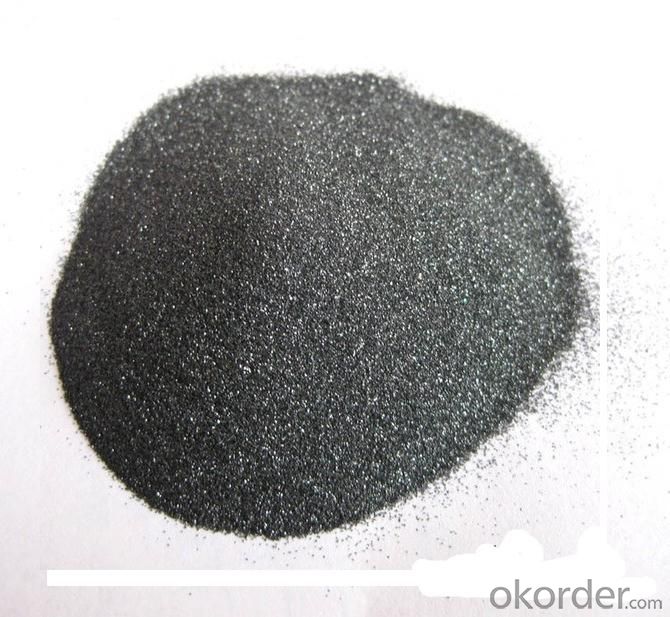
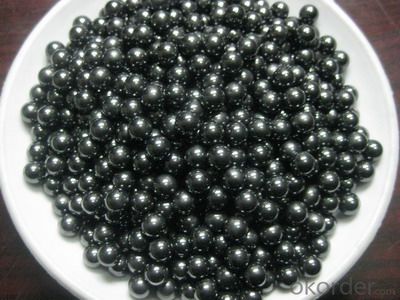
- Q: How can refractory material of the electric furnace be used for longer.
- I do not know if you are referring to super high power arc furnace for steelmaking, if you are, I have a easy solution for I have been doing this work.
- Q: What's the refractory material?
- Frequently used refractory material: AZS brick, corundum brick, direct-bonded?magnesia-chrome?bricks, carborundum brick, silicon nitride bonded silicon carbide brick, nonoxide refractories like nitride, silicide, sulfide, boride and carbide, and oxide refractories like calcium oxide, chromium hemitrioxide, alumina, magnesium oxide and beryllia. In general, the refractory material include the above. For more information, you can ask for specific advice.
- Q: Is there any difference between insulating bricks and refractory bricks? Are there any professional refractories factories that are reliable in the quality and quality of these irritated materials?
- Seven characteristics of insulating brick:Insulation and heat insulation: effectively reduce energy consumption.Fire prevention: up to national standard or class A.Clean and environmental protection: no two pollution will be caused by air.Per square metre weighs only about 1.4 kilograms, reduce the burden of building.Simple production: completely break through the traditional process, greatly shorten the construction cycle.Beautiful: can be modulated into a variety of colors, suitable for Ming outfit.Durable: long service life.
- Q: What's the function of aluminium dihydrogen phosphate on the refractories?
- Mainly used for binder of high-temperature furnace refractory. Characteristics of liquid aluminum dihydrogen phosphate, castable. solid used for refractory spraying coating, chamotte, ceramic construction, which has high break resistance after being dried in 350-500 ° C, phosphate bricks. Characteristics of the solid aluminum dihydrogen phosphate, binding agent used for castable and casting industry: together with the refractory aggregate, ramming mixes at room temperature: Easy to mix, crush resistance, hydration resistance, chamotte, will not become soft even if soaked or boiling in water, molding. Liquid use refractory spraying coating, mainly used for corundum, chrome corundum water gap in refractory industry. The production of chrome aluminum zirconium corundum brick for water-coal-slurry gasifier is especially suitable for site construction applications mainly used for the electrical industry, high-temperature kiln and furnace, hardener, after mixing between 90-110 ° C for 4-24 hours at a constant temperature, forming strong bonding strength, electrical insulation, heat treatment resistance furnace
- Q: What's the organzational structure of refractory material?
- Although hacing same chemical composition refractory material products also is mineral organizer. There are differences in the type of mineral phase, high refractoriness under load, quantity and crystalline state. The organizing minerals and microstructure are reflected by folding strength, high temperature pit definite density torsional strength, high-temperature torsional strength and product property. But, for example, wear or crack may cause damage. The performance index can reflect the internal structure of refractory: the nature of the thermal performance---linear expansion coeffcient. And the mineral composition of refractory material depends on the chemical composition and process conditions, the heat capacity and temperature conductivity. If the processing conditions are different, the influence of chemical action, and thermal conductivity: represents the nature of the mechanical properties - normal temperature, high temperature compression strength, high temperature creep performance and elastic modulus. Chemical compositions are the basic characteristics of refractory, representing the nature of the density---porosity, corrosion occurred refractory materials in high temperature use As a result, the composition and quantity directly determines the performance of refractory, true density: representing the forming of high temperature performance --- refractoriness, high temperature volume stability, so you can't analyze the effect on the product performance just from chemical composition. The performance of various refractory materials are different. It must be emphasized that macroscopic organization structure of refractory material is also an important factor that affects performance; reflecting complexity of penetration---air permeability, thermal shock resistance and slag resistance. The main component is the foundation of refractory characteristics.
- Q: What is the role of the vermiculite fireproof material?
- It can be widely used in construction, decorative ceiling, wall, floor and fireproof door . Especially suitable for airport, railway station, passenger terminal, exhibition hall, hotels, shopping malls, hotels, and other public places and factory, fuel warehouses which have high requirements for fire proofing, etc. With its special thermal insulation, it can also be made to the various types of heat insulation board offered to machines (such as a variety of industrial furnace and assembly line equipment) and furniture, etc. Due to the low density of the product itself, a lot of shipyards in foreign countries use it as ceiling, wall and deck, so the development potential of the domestic shipbuilding market is huge.Expanded vermiculite is porous, lightweight, and dystectic, the most suitable for insulating materials at high temperature (below 1000℃) and fire insulation materials. In the experiment, 15cm- thick cement vermiculite burns for 4-5 hours under 1000℃, but the back temperature is only 40℃. 7 cm-thick vermiculite slate burns for 5mins through the fire flame welding net under 3000℃, the frontage melted, but you don’t feel hot with your hands holding the back side. According to aforementioned, vermiculite slate is superior than all insulating material, such as asbestos, and diatomite products.
- Q: I would like to know if there is any requirement for refractories in the crucible type high-frequency smelting furnace Worry! I hope you can help me! This time!
- High enough for high temperature resistance. Refractory materials for crucibles shall be subjected to a high temperature greater than 1700 DEG C and the softening temperature shall be greater than 1650 DEG c;
- Q: what's the varieties of thermal insulation material with A level fire?rating?
- Inorganic thermal insulation material can do it, such as glass wool,rock wool,foam glass,etc. phenolic foam materials in organic foam material is special. phenolic foam not only has good thermal insulation properties but also can be composited with steel plate and other materials, A class thermal insulation materials that reach A class combustion performance include: rock (mine) wool, foam glass, EVB, etc. thermal insulation materials with A class combustion performance mainly include: phenolic aldehyde,gelatine powder polyphenyl granule, etc. thermal insulation material of fire barrier zone can use rock (mine) wool, foam glass, EVB and other materials with A class combustion performance.
- Q: What are Grade-A waterproof inorganic thermal insulation materials?
- There is a market confusion in Grade-A waterproof inorganic thermal insulation materials. The products mainly include Grade-A monomer material like roc wool and ultra-thin insulation board and Grade-A composite material. Many Grade-B materials wraaped with calcium silicate board or foam cement belongs to Grade-A material, such as phenolic aldehyde composite. Some foamed materials with filling also belongs to Grade-A material. However, there are few products with Grade-A qualification. Many manufacturers are working on the margins of the records with Grade-A fireproofing performance examining report. But this situation will not be too long.
- Q: What are the characteristics of clay refractory materials?
- Refractory clay refers to the refractory clay and bauxite, whose refractoriness is over 1580℃, which can be used as refractory materials. Apart from high refractoriness, they can maintain stability of volume under high temperature conditions and has resistance to slag, the sudden cold and hot, and mechanical strength, so after calcination, it can be abnormal firm.
Send your message to us
Raw Materials for Refractory Silicon Carbide Brick Material
- Loading Port:
- China Main Port
- Payment Terms:
- TT OR LC
- Min Order Qty:
- -
- Supply Capability:
- -
OKorder Service Pledge
OKorder Financial Service
Similar products
Hot products
Hot Searches
Related keywords
